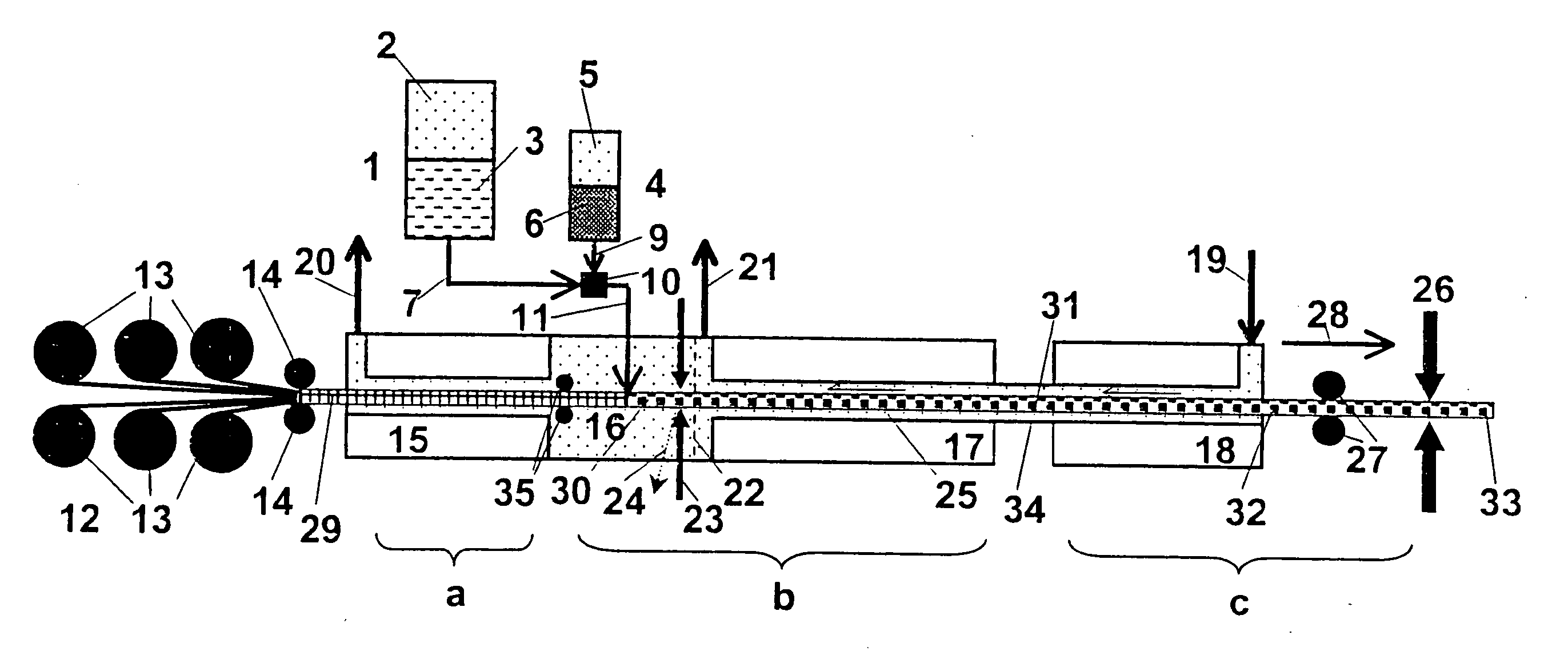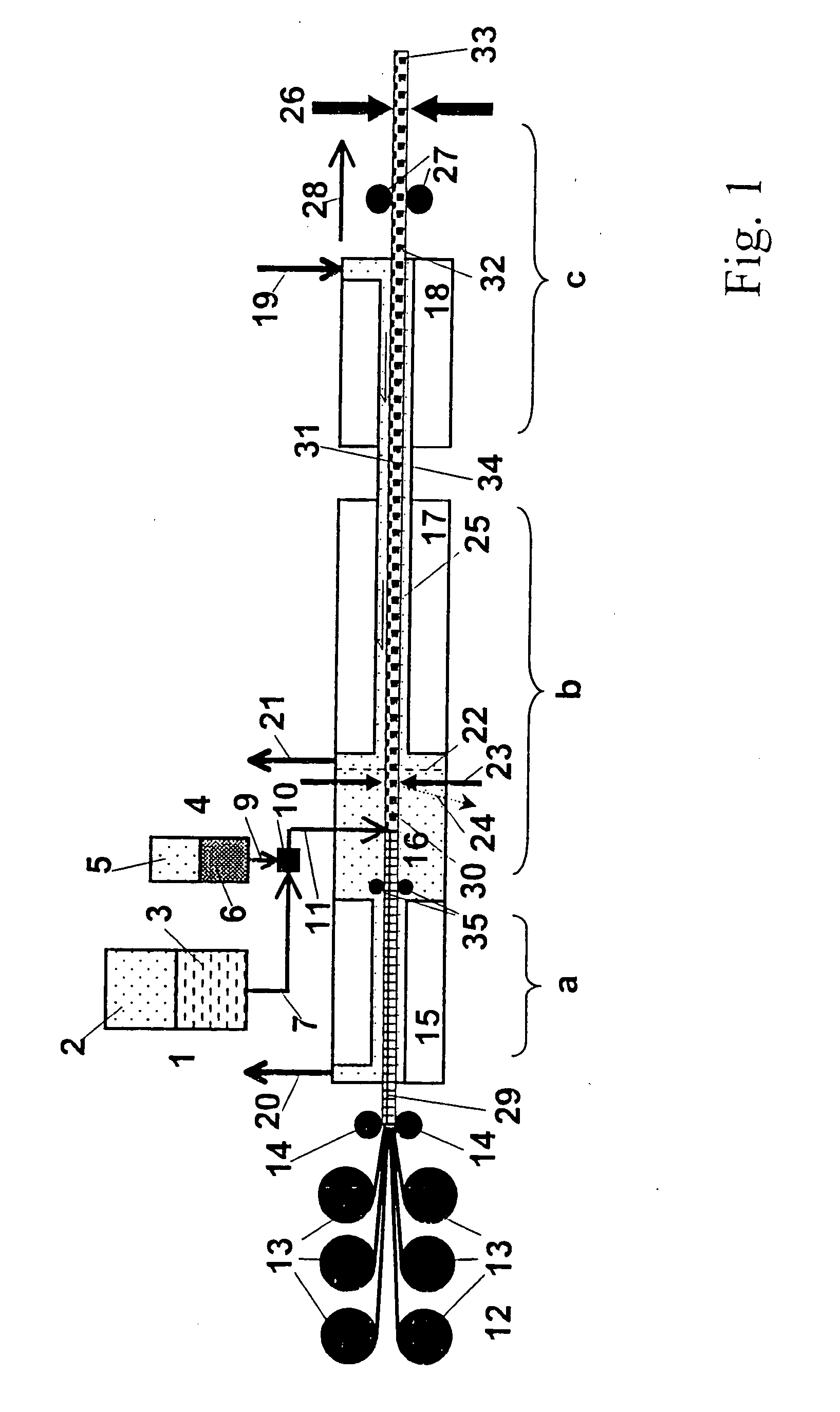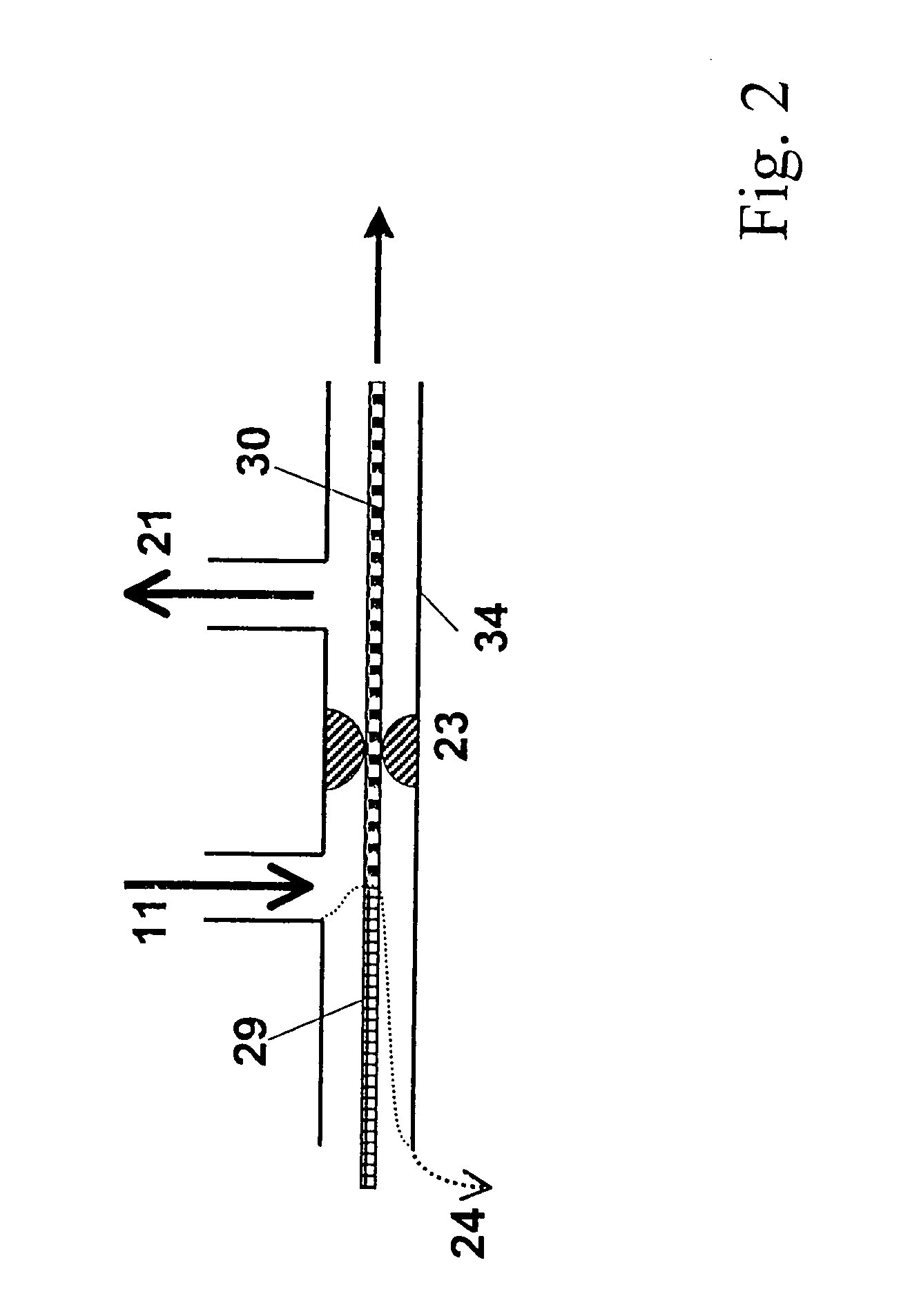Method for producing composite materials using a thermoplastic matrix
a thermoplastic matrix and composite material technology, applied in the direction of liquid surface applicators, pretreated surfaces, coatings, etc., can solve the problems of considerable buildup and backflow of melt, and achieve the effects of preventing oxidation of lactam melt, increasing material pressure, and speeding up the speed of over 10 m/min
- Summary
- Abstract
- Description
- Claims
- Application Information
AI Technical Summary
Benefits of technology
Problems solved by technology
Method used
Image
Examples
example 1
[0045] Laurolactam pellets are melted under a nitrogen atmosphere at a temperature of 170 degrees Celsius in tank 1. A liquid initiator, such as described in Experiment 7 in DE 19961818 A1, is kept at room temperature in tank 4. According to Table 1 a) in DE 19961818 A1 the liquid initiator in Experiment No. 7 is a product of the reaction of dicyclohexyl-carbodiimide (DCC) with the protic compound Nylostab S-EED (Ny) and the base sodium methylate in the aprotic salvation medium N-octylpyrrolidone (NOP). In this operation liquid initiator 6 and lactam-12 melt are used in a ratio of 3.5:96.5% by weight. Liquid initiator 6 and lactam-12 melt are thoroughly mixed in the mixer 10 and brought onto a preheated and dried reinforcing material in a low-viscosity state (approximately like water).
[0046] The reinforcing material, a 12 K (12,000 filaments) roving consisting of carbon fibers of the 5N21 type from the Tenax Fibers company, Wuppertal (Germany), is fed in from several bobbins, where...
example 2
[0050] Caprolactam pellets are melted under a nitrogen atmosphere at a temperature above 80 degrees Celsius in tank 1. The same liquid initiator as in Example 1 is kept at room temperature in tank 4. In this operation liquid initiator 6 and lactam-6 melt are used in a ratio of 3.5:96.5% by weight. Liquid initiator 6 and lactam-6 melt are thoroughly mixed in the mixer 10 and brought onto a preheated and dried reinforcing material in a low-viscosity state (approximately like water). The reinforcing material, the same as in Example 1, is fed in from several bobbins, and preheated and dried in a preheating unit 15 at a temperature of 170 degrees Celsius. The remainder of the process is similar to Example 1, but the temperature in the heating unit through which the impregnated reinforcing material is passed is 230 degrees Celsius, i.e. somewhat lower than in Example 1, in order to keep the sublimation of caprolactam as low as possible.
[0051] For further reduction of the sublimation it i...
PUM
| Property | Measurement | Unit |
|---|---|---|
| Temperature | aaaaa | aaaaa |
| Temperature | aaaaa | aaaaa |
| Temperature | aaaaa | aaaaa |
Abstract
Description
Claims
Application Information
 Login to View More
Login to View More - R&D
- Intellectual Property
- Life Sciences
- Materials
- Tech Scout
- Unparalleled Data Quality
- Higher Quality Content
- 60% Fewer Hallucinations
Browse by: Latest US Patents, China's latest patents, Technical Efficacy Thesaurus, Application Domain, Technology Topic, Popular Technical Reports.
© 2025 PatSnap. All rights reserved.Legal|Privacy policy|Modern Slavery Act Transparency Statement|Sitemap|About US| Contact US: help@patsnap.com



